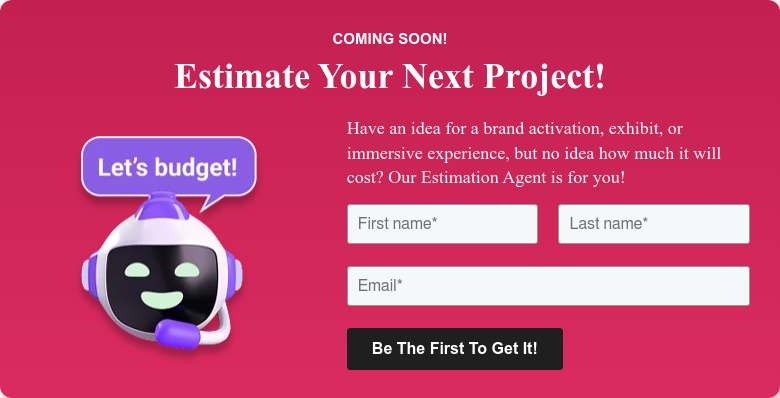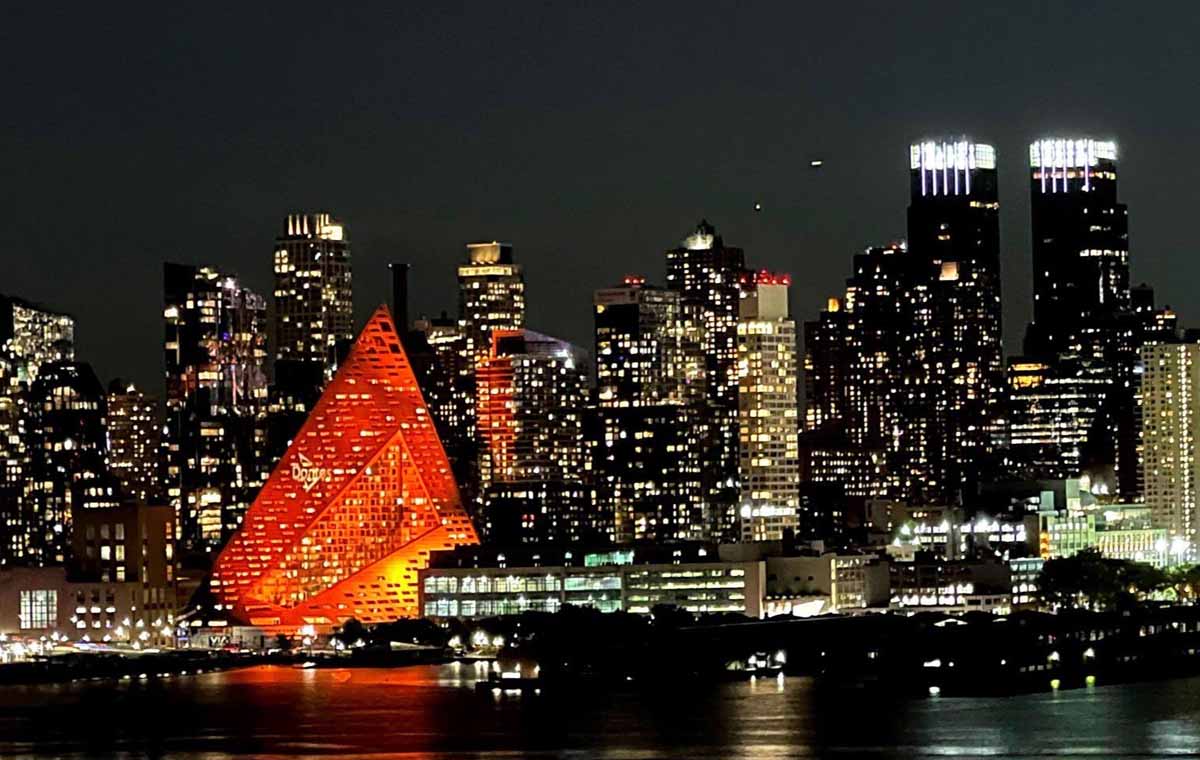In 2024, brands are not only utilizing media architecture but flocking to it to captivate their audiences like never before. Media architecture offers brands a new and innovative way to stand out in a crowded market by creating 3D physical structures imbued with technology and media components. From mesmerizing LED screens and digital projection mapping to other forms of media technology, these structures provide the perfect backdrop to create a one-of-a-kind immersive brand experience.
From The Sphere in Las Vegas to the Samsung flagship store in Seoul, brands are turning to media architecture to push the limits of what's possible. As consumers continue to demand more unique and engaging experiences, media architecture provides brands with a powerful tool to differentiate and captivate their audiences.

What is Media Architecture? And What Makes it Effective?
Media architecture is the application of digital, visual effects to buildings, bridges, walls, and other physical architectural structures. Common examples include projection mapping, themed lighting design, and oversized LED screens. Times Square in New York City is an early example of media architecture, but this medium is now being used more broadly by museums, artists, brands, organizations, and municipalities to capture attention, entertain audiences, and raise awareness.
It’s well known that consumers have become blind to many other forms of advertising such as banner ads and billboards, but it’s hard to ignore a giant Dorito projected on the side of a building. Media architecture is effective because it lives outside of the typical advertising or marketing environment. It leverages the element of surprise and captures viewers’ attention by piquing curiosity. Media architecture not only reaches audiences in person but also generates earned media through social posts and shares, further amplifying its reach. Whether for brands promoting a product, organizations highlighting a cause, or art for art’s sake, media architecture provides a novel, compelling way to make a statement.
Media Architecture at Work - 5 Inspiring Examples
- Nike House of Innovation: Nike has incorporated media architecture into their flagship store known as the House of Innovation. The entire building is covered with a unique LED screen system, providing a breathtaking visual experience. The screen also enhances the shopping experience by highlighting the products on display.
- Google Pixel Showroom: As one of the most innovative tech brands, Google has taken media architecture to another level by creating an interactive showroom for their Pixel products. The giant LED screen used in the showroom is equipped with motion sensors, allowing customers to interact with the screen and experience the functionalities of the products.
- The Sphere: Art meets technology meets concert venue? Yep, in addition to being a spherically-shaped building in a city full of eye-catching architectural and interactive multimedia displays, The Sphere dials it all up a notch with a truly immersive, multi-sensory experience. From LED walls to responsive seats to a theater experience that includes its own weather (wow!), this example of location-based entertainment is an homage to media architecture and immersive experiences.
- Tiffany & Co. “Blue is the Color of Love:" Tiffany leveraged its trademark blue hue in an innovative brand awareness campaign for Valentine's Day. By lighting up iconic buildings in New York City, Los Angeles, and Vancouver, the luxury jeweler subtly but powerfully reached audiences on a day known for both celebrating love and shopping for jewelry.
- Doritos Triangle Tracker Campaign: Doritos boosted brand awareness by hunting down three triangle-shaped buildings in different U.S. cities and designed a branded projection-mapping experience illuminating each facade in the chip’s unmistakable orange hue. The campaign sparked social buzz and engagement for the brand and undoubtedly left a few witnesses with a sudden craving for the nacho cheese chips.
“Generally, the more transparent the technology, the more immersive the experience.”
BRIAN DRESSEL
VP OF MEDIA + TECHNOLOGY, BRIDGEWATER STUDIO
How to Leverage Media Architecture for Your Brand
Ready to put media architecture to work for your brand or organization? As with any trending new technology – it's crucial to not just hop on the bandwagon. The experience needs to be relevant both to your audience and to your goals. It should align with your messaging and be immediately recognizable as your brand.
Next, consider your location, the duration of the campaign or experience, and your goals. What you are trying to accomplish should line up with where, when, and for how long the activation takes place. Given that most media architecture projects are similar to public art installations, weather, permitting, utilities, and traffic are all factors that need to be considered. Long-term installations require maintenance and sometimes staffing. Equipment requires repair and replacement over time. The success of your experience will depend on how you plan for and address these realities.
Finally, choose a media and technology company with experience in these types of installations. A knowledgeable partner can guide you step by step through strategy, design, and production—and proactively address any potential problems. The best partners understand the need to plan for the worst and hope for the best by game-playing the scenario from installation through “run of show.” They will also be masters of show control, and able to design and program the technology to run seamlessly. They’ll understand which contingencies to have in place so if there is a power outage, a road closed, or a blizzard in June … they’ll have a plan for that. Experienced partners will also help you budget for the total cost of ownership of the experience, which is particularly important for semi-permanent installations and helps maintain the integrity of the experience throughout its intended lifespan.
Final Thoughts on Media Architecture
The rise of media architecture for creating brand experiences exemplifies the way many modern brands now communicate and interact with their audiences. In the face of a demanding consumer landscape, brands like Nike, Google, Tiffany & Co., The Sphere, and Doritos have leveraged this innovative tool to stand out in a crowded market. They've masterfully used 3D structures imbued with technology to transform traditional advertising into captivating, immersive experiences.
As we look back at the developments of media and technology in experiential marketing over the last few years, it's clear that media architecture is not just a trend but a powerful medium that is redefining the boundaries of art, technology, and advertising. The examples explored in this article only scratch the surface of what's possible, and we eagerly anticipate future innovations that will further revolutionize this exciting field.
At Bridgewater Studio, we help brands build thoughtful, effective immersive experiences that resonate with their audiences and leave a lasting impression. Our all-inclusive, end-to-end approach provides our clients with a single partner from inception to installation, streamlining the process and eliminating the hassle of working with multiple vendors. Learn more by booking a no-obligation strategy session with us today.


.png)
.png)
.png)






